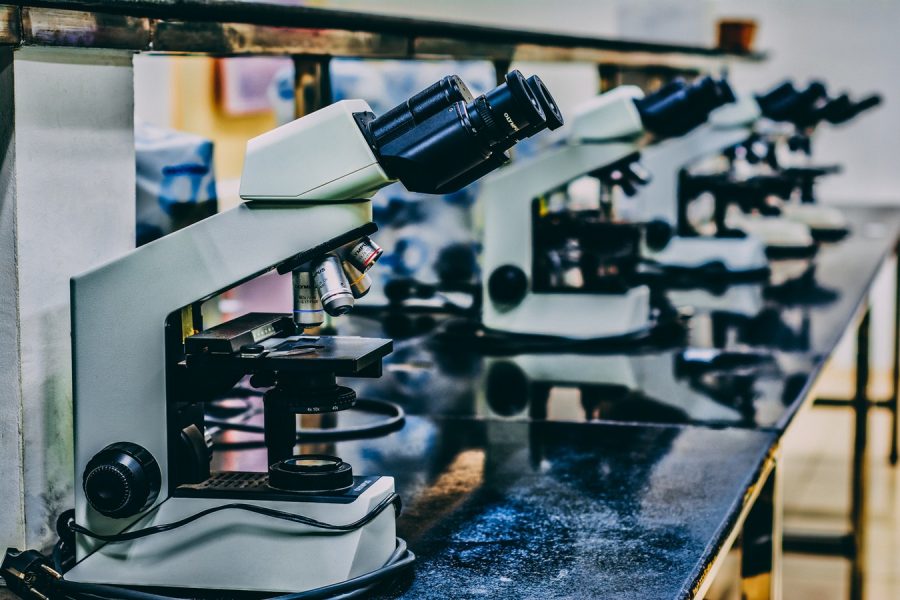This is torture! Cloning must be stopped
A crisis caused by experimenting
December 10, 2018
“Cloning represents a very clear, powerful, and immediate example in which we are in danger of turning procreation into manufacture,” – Leon Kass.
Technology has been impacting humans from generation to generation, whether it is negatively or positively. Humans have been relying on technology since the very beginning. We jumped from building railroads to the development of SCNT.
SCNT stands for Somatic Cell Nuclear Transfer. It is self-explanatory, but to make it simple, it’s the technology that humans use for cloning.
This technique creates a genetically identical organism, cloning. Equally necessary, the first transcontinental railroad served had a connection for the Pacific Ocean and the Atlantic Ocean, it was built covering the western half of America, it was an enormous step for us in the world of technology. Using railroads took less time, and it made it safer to travel.
Cloning has been a debatable topic. Cloning is a process of asexual reproduction, whether between humans, animals, or cells. A clone is a subject, constructed by cloning, that would become the genetic duplication of the original being. Genetic, Reproductive, and Therapeutic, are three types of cloning. They all have different purposes and significance. Undoubtedly, cloning would solve many problems. However, this is a risk.
So, what’s the reason for cloning? Is it worth the risk? We shouldn’t do things that will only give us a slim chance of success and may harm us, emotionally and physically. Why are humans going through such trouble for cloning and how does this biological research truly benefit us?
Cloning is unsafe, dangerous, hazardous, menacing, threatening, and risky.
The main reason why people are opposing the idea of cloning is because of safety and medical concerns. Studies have shown that 95% of cloning experiments of mammals have resulted in failures. For example, reproductive cloning has led to miscarriages, stillbirths, and life-threatening anomalies. Cloning is a technique that cannot be developed by humans without putting the physical safety of the clones and the original subject who bear them, at extreme risks. People who are researching the topic of cloning, get introduced by the story about Dolly, the sheep.
Dolly was used for a cloning experiment back in 1996 and was a highly observed subject. At the time, Dolly was the first successfully cloned mammal. Dolly was born on July 5, 1996, and was the product of three different mothers. Each of them had a purpose for her cloning process.
The first mother provides scientists with the egg itself, another the genetics/DNA, and the third one carried the cloned embryo. Dolly was created using the technique of SCNT, where the cell from
an adult cell was transferred into an unfertilized developing egg. After the cloning process, Dolly lived up to 5 months before her 7th birthday and passed away due to lung cancer and severe
arthritis.
Scientists do believe that her cause of death was due to the cloning process.
“The clones that have been produced, they say, often have problems severe enough developmental delays, heart defects, lung problems, and malfunctioning immune systems to give a pause to anyone thinking of cloning a human being” [New York Times].
Cloning can lead to many medical diseases. It causes developmental delays, heart defects, lung problems, and more.
“All the evidence so far, scientists say, indicates that the breathtakingly rapid reprogramming in cloning can introduce random errors into the clone’s DNA, subtly altering individual genes with consequences that can halt embryo or fetal development, killing the clone. Or the gene alterations may be fatal soon after birth or lead to major medical problems later in life” [New York Times].
Initial concerns caused by cloning are medical problems such as premature aging, immune system failures, and high risk of cancer.
“Calf and lamb clones tend to have more health problems at birth and may be more likely to die right after birth than conventionally bred animals. Clones born with abnormalities may continue to have these problems until their final stages of life” [FDA GOV].
“Two years later, researchers in Japan cloned eight calves from a single cow, but only four survived. Besides cattle and sheep, other mammals that have been cloned from somatic cells include cat, deer, dog, horse, mule, ox, rabbit and rat. In addition, a rhesus monkey has been cloned by embryo splitting” [Genome].
Therefore, cloning should not be a technique used on any living organism due to medical concerns. Earth contains around 7.5 billion people (to be exact, 7,530,103,737 in 2017). Earth is only stable enough to contain this amount of people but imagine if cloning was a positive possibility. We would not be able to support ourselves with the number of resources we’d have to divide amongst ourselves. Overpopulation is something that we as humans have already suffered for generations.
Regardless of the arguments against cloning, there are plenty of people who don’t oppose of this idea. The people who are for cloning believe that it would possibly, “bring back the dead.”
Earth has experienced mass extinctions previously and is currently in the 16th one. Pyrenean Ibex was an animal, now extinct, that scientists decided to collect cells of for cloning
experiments, hopefully bringing them back if they go extinct. The plan was followed as told and the species, unfortunately, went extinct.
“The bucardo (Capra pyrenaica pyrenaica), or Pyrenean ibex, lived high in the Pyrenees until its extinction in 2000. Three years later researchers attempted to clone Celia, the last bucardo. The clone died minutes after birth” [National Geographic].
Debunked.
The attempt was unsuccessful.
The experiment not only shows the limits of scientists but, it also proves that the idea of cloning is an extremely dangerous process. Cloning is unethical due to lack of success, high risk of medical concerns, and the boost in the population that we are unable to maintain. Cloning is a practice that cannot help our society much in a way and is practically a waste of money and time. The risks are too high, and the chances are too slim. Human, and life overall, is significant. People who disregard this idea put life, before experiments and extreme shortcuts. People who are for the idea of cloning don’t have life as the number one priority. Bringing back animals who had a positive impact on society is important, but we should do what we can to keep the current ones alive
Sources and Bibliography:
Kolata, Gina. “Researchers find big risk of defect in cloning animals.” The New York Times. 25
Mar. 2001. Web. 16 Nov. 2018
<nytimes.com/2001/03/25/world/researchers-find-big-risk-of-defect-in-cloning-animals.html?refe
rer=https://www.google.com/>“Cloning Fact Sheet.” National Human Genome Research Institute (NHGRI). 21 Mar. 2017.
Web. 16 Nov. 2018<www.genome.gov/25020028/cloning-fact-sheet/>.
Center for Veterinary Medicine. “Animal Cloning – A Primer on Cloning and Its Use in Livestock
Operations.” U S Food and Drug Administration Home Page, Center for Drug Evaluation and
Research. 29 Aug. 2018. Web. 16 Nov. 2018
<www.fda.gov/animalveterinary/safetyhealth/animalcloning/ucm055513.htm>.
Martín, Raúl, and Sergey Zimov. “Bringing Them Back to Life.” National Geographic, National
Geographic. 13 Jan. 2017. Web. 16 Nov. 2018
<www.nationalgeographic.com/magazine/2013/04/species-revival-bringing-back-extinct-animals
/>.






